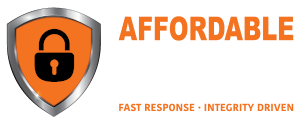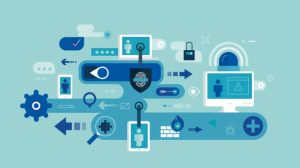In an era where data breaches and cyberattacks are becoming increasingly common, safeguarding your business against digital threats is paramount. One of the most critical aspects of cybersecurity is ensuring that your employees are well-informed and practice safe online habits. In this blog post, we’ll explore essential employee cybersecurity best practices to help fortify your organization’s defenses.
Password Hygiene
Use Strong, Unique Passwords: Encourage employees to create strong passwords for their accounts, combining uppercase and lowercase letters, numbers, and special characters. Stress the importance of not using easily guessable passwords like “password123.”
Implement Password Managers: Encourage the use of password management tools to securely store and manage passwords. These tools generate complex passwords and eliminate the need for users to remember them.
Enable Multi-Factor Authentication (MFA): Require employees to enable MFA for their accounts whenever possible. This provides an additional layer of security even if a password is compromised.
Phishing Awareness
Training and Education: Conduct regular phishing awareness training sessions to help employees recognize phishing emails and other social engineering attacks. Teach them to verify the sender’s identity and avoid clicking on suspicious links or downloading attachments from unknown sources.
Test Phishing Awareness: Periodically simulate phishing attacks within your organization to assess how well employees respond to these threats. Use these exercises as opportunities for further education.
Software Updates and Patch Management
Keep Software Updated: Ensure that employees regularly update their operating systems, applications, and antivirus software. Cybercriminals often target vulnerabilities in outdated software.
Automate Updates: Encourage the use of automatic updates whenever possible to ensure that systems remain current with the latest security patches.
Safe Internet Browsing
Use Secure Connections: Emphasize the importance of using secure, encrypted connections (HTTPS) when accessing websites and discourage the use of public Wi-Fi for sensitive transactions.
Beware of Downloads: Caution employees against downloading files or software from untrusted sources. Stress that only reputable sources should be used for downloading software or updates.
Data Handling and Privacy
Data Encryption: Ensure that sensitive data is encrypted both in transit and at rest. Encourage employees to use encryption tools when sending confidential information.
Data Backup: Promote regular data backups to prevent data loss in case of a cyber incident. Backups should be stored securely and tested periodically for data retrieval.
Physical Security
Secure Devices: Remind employees to secure their physical devices, including laptops, smartphones, and USB drives, when not in use. Lock screens and encrypt devices if possible.
Dispose of Hardware Securely: When devices are no longer in use, ensure that they are securely wiped or destroyed to prevent data leakage.
Incident Reporting
Establish Clear Reporting Procedures: Create an easy-to-follow protocol for employees to report any cybersecurity incidents or suspicious activities promptly. Encourage a “see something, say something” culture within the organization.
Incident Response Plan: Develop and maintain an incident response plan that outlines the steps to take in the event of a security breach. Regularly review and update this plan.
Remote Work Security
Secure Home Networks: Provide guidance on securing home networks, including changing default router passwords, enabling network encryption, and using VPNs for remote access.
Remote Device Security: Ensure that remote employees follow the same cybersecurity best practices as in-office employees, including using MFA and regularly updating their devices.
By implementing these employee cybersecurity best practices and fostering a culture of security awareness within your organization, you can significantly reduce the risk of cyberattacks and data breaches. Remember that cybersecurity is an ongoing process, and staying vigilant is crucial in today’s digital landscape.






